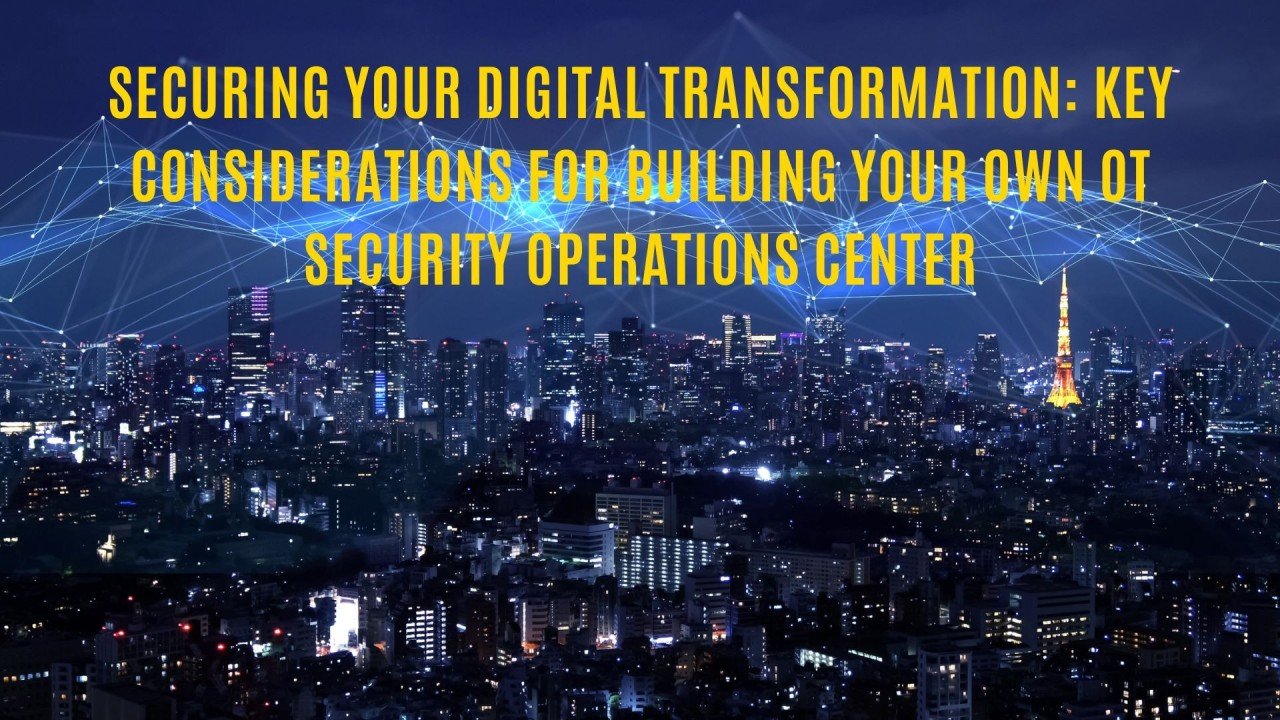As digital transformation initiatives become increasingly prevalent, the threat landscape expands, demanding robust cybersecurity measures. Companies must secure their digital transformation journey for Operational Technology (OT) assets by selecting the right OT cybersecurity partner. The growing need for Security Operations Centers (SOCs) is apparent as organizations seek to protect their OT environments from sophisticated cyber threats.
Over the past 10 years in the OT Cybersecurity world, I have discussed the same topic with hundreds of customers from diverse regions and industries, including Oil & Gas, Petrochemical, Energy, Pharma, and Manufacturing, the three primary options for establishing an OT SOC: extending their existing IT SOC to cover OT assets, building a standalone , or employing the services of a Managed Security Service Provider (). Each alternative presents its own advantages and disadvantages, requiring organizations to carefully evaluate their unique requirements and resources.
- Extending IT SOC to cover OT assets: While seemingly cost-effective, using an existing IT SOC for OT assets presents challenges due to a lack of integration, differing security requirements, limited visibility, varied skill sets, and restricted budgets and resources. To overcome these challenges, organizations should explore specialized solutions and expertise designed explicitly for OT asset protection.
- Establishing an In-House OT SOC: An in-house OT SOC provides a deep understanding of specific security needs and allows for tailored approaches. However, setting up and maintaining the SOC demands considerable staff, technology, and infrastructure investments. Additionally, staffing and staff retention remain significant challenges, as the OT security job market has experienced a shortage in recent years.
- Using an MSSP for OT SOC: MSSPs offer specialized knowledge and expertise in IT and OT security, detecting and responding to a broader range of threats. They often provide more cost-effective solutions, as the company does not need to invest in resources, infrastructure, or technology required to establish an in-house SOC.
When it comes to OT cybersecurity, choosing between an in-house or MSSP SOC can be tough for organizations. However, it’s important to consider your needs and resources before making a choice. For those with the resources to build an in-house SOC, subscribing to an MSSP provider can provide additional monitoring of critical assets. But no matter which approaches you take comprehensive OT cybersecurity requires key steps such as selecting the right cybersecurity partner, securing the basics, building a robust cybersecurity program, and investing in cyber insurance. It’s a continuous process that demands a thorough approach to safeguard all assets, including those in OT environments. So, consider these factors and stay vigilant in protecting your organization’s assets.
To further explore and understand how managed security services are continuing their growth curve in today’s digital world, please listen to my podcast Interview with Greg Hale at Industrial Safety and Security Source
Calling all cybersecurity professionals! I want to hear from you. Have you implemented an OT SOC? What were your thoughts and experiences? Which option worked best for your organization and why? Share your insights in the comments below or DM me. Let’s learn from each other and improve our cybersecurity strategies together.




